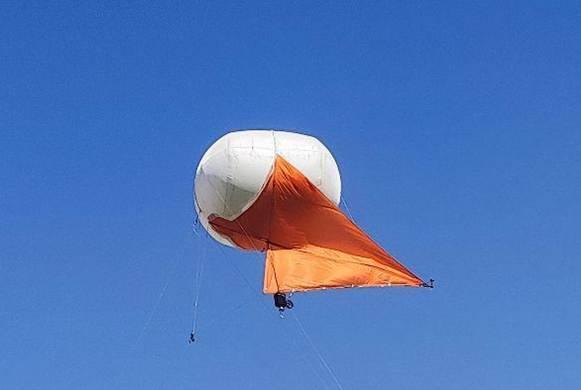
India’s First Aerostatic Drone Unveiled by NECTAR
In a significant breakthrough in the field of unmanned aerial vehicles (UAVs), NECTAR, a research and development organization under the Department of Science and Technology (DST), has unveiled India’s first aerostatic drone, developed by Airbotix Technologies. This innovative drone has the capability to stay airborne for over 4 hours, making it an ideal solution for various applications, including border security, wildlife tracking, and disaster response.
The aerostatic drone, also known as an altitude-hold drone, uses air pressure to maintain its altitude, rather than traditional rotors or propellers. This technology enables the drone to fly silently, without producing any noise, and offers energy-efficient surveillance capabilities. The silent operation of the drone is a significant advantage, as it allows it to gather intelligence without being detected, making it an effective tool for border security and surveillance.
The drone is equipped with advanced sensors and cameras, including thermal imaging and day-night vision, which enable it to capture high-quality images and videos even in low-light conditions. This feature is particularly useful for search and rescue operations, as it allows the drone to locate missing persons or stranded individuals even in dark or foggy conditions.
The aerostatic drone has already drawn significant interest from various government agencies, including the Central Reserve Police Force (CRPF) and civil authorities. The CRPF, in particular, has expressed interest in using the drone for border surveillance and intelligence gathering. The drone’s silent operation and long endurance make it an attractive solution for the CRPF, which is responsible for securing India’s borders.
The drone is also expected to be useful for wildlife tracking and conservation efforts. The thermal imaging and day-night vision capabilities of the drone will enable wildlife researchers to track and monitor animal movements, even in areas with dense vegetation or during nighttime. This will help conservationists to better understand animal behavior and habitat, and develop more effective conservation strategies.
In addition to its surveillance and tracking capabilities, the aerostatic drone is also designed to be used in disaster response situations. The drone can quickly deploy to affected areas and provide critical information to emergency responders, such as damage assessments, location of survivors, and areas of need. The drone’s silent operation and ability to fly in tight spaces make it an ideal solution for navigating rubble and debris-filled areas.
The development of India’s first aerostatic drone is a significant achievement for NECTAR and Airbotix Technologies. The drone’s capabilities and features have the potential to revolutionize various industries, including security, wildlife conservation, and disaster response. As the drone is rolled out for commercial use, it is expected to have a significant impact on the way we approach surveillance, tracking, and disaster response.
In conclusion, the unveiling of India’s first aerostatic drone is a major milestone in the country’s quest for innovation and technological advancement. The drone’s capabilities, including its silent operation, long endurance, and advanced sensors, make it an attractive solution for various applications. As the drone is deployed for commercial use, it is expected to have a significant impact on various industries and help India to establish itself as a leader in the field of unmanned aerial vehicles.






